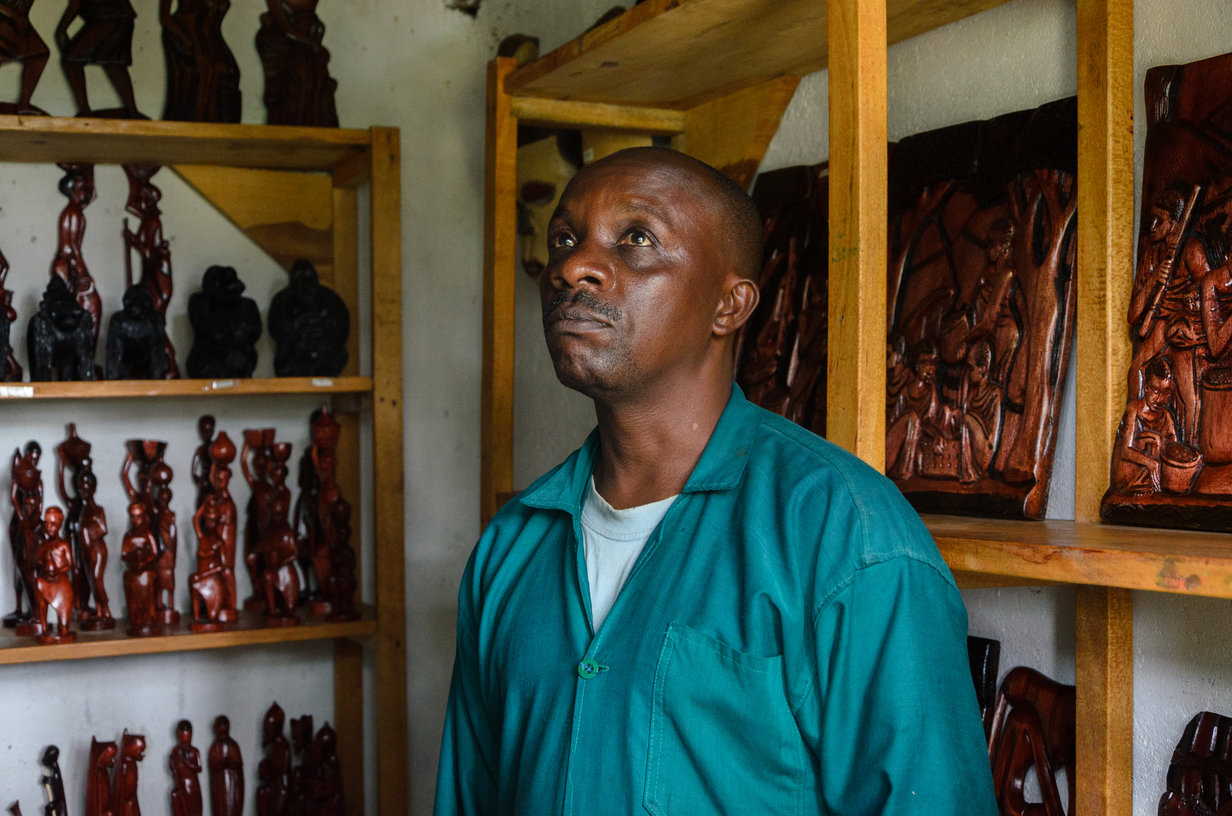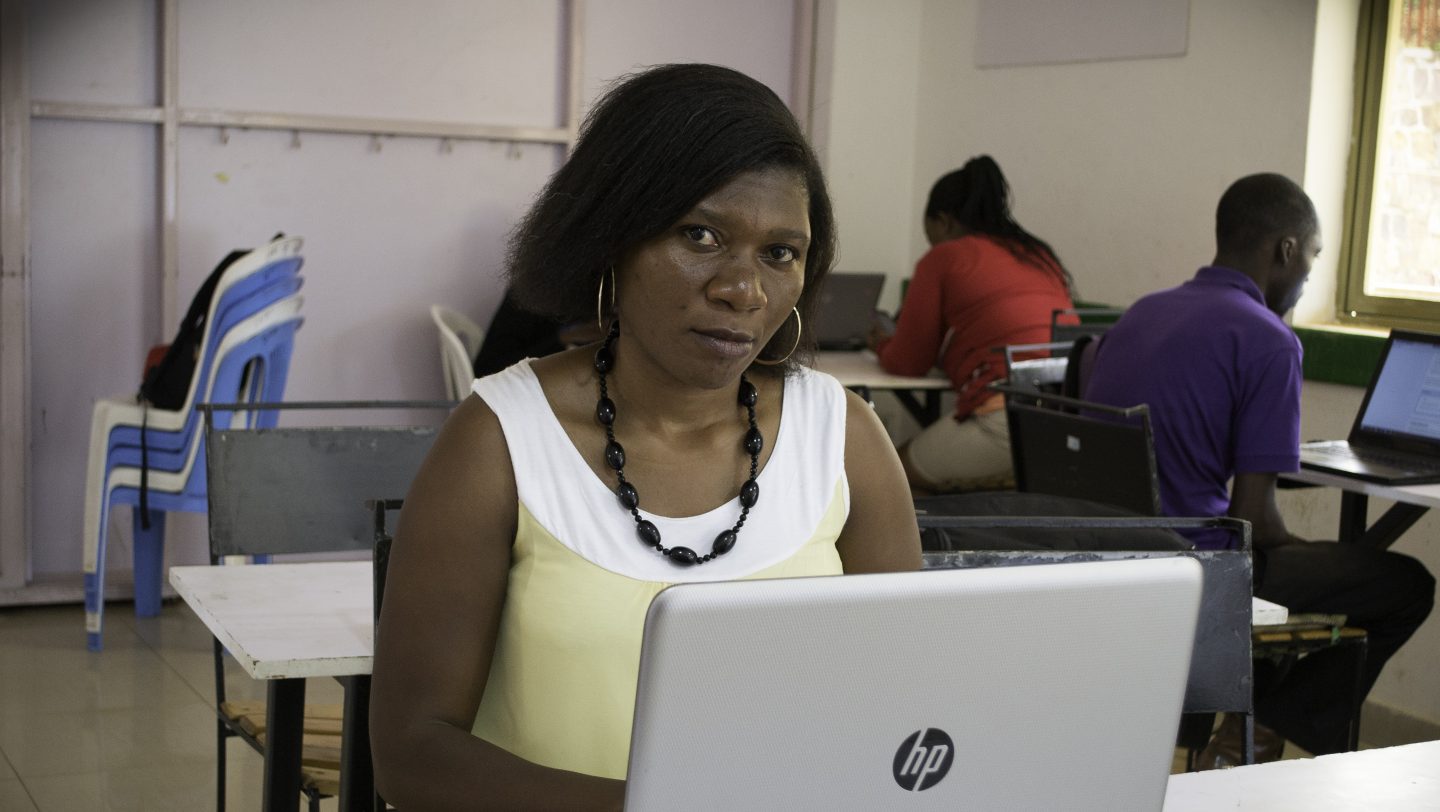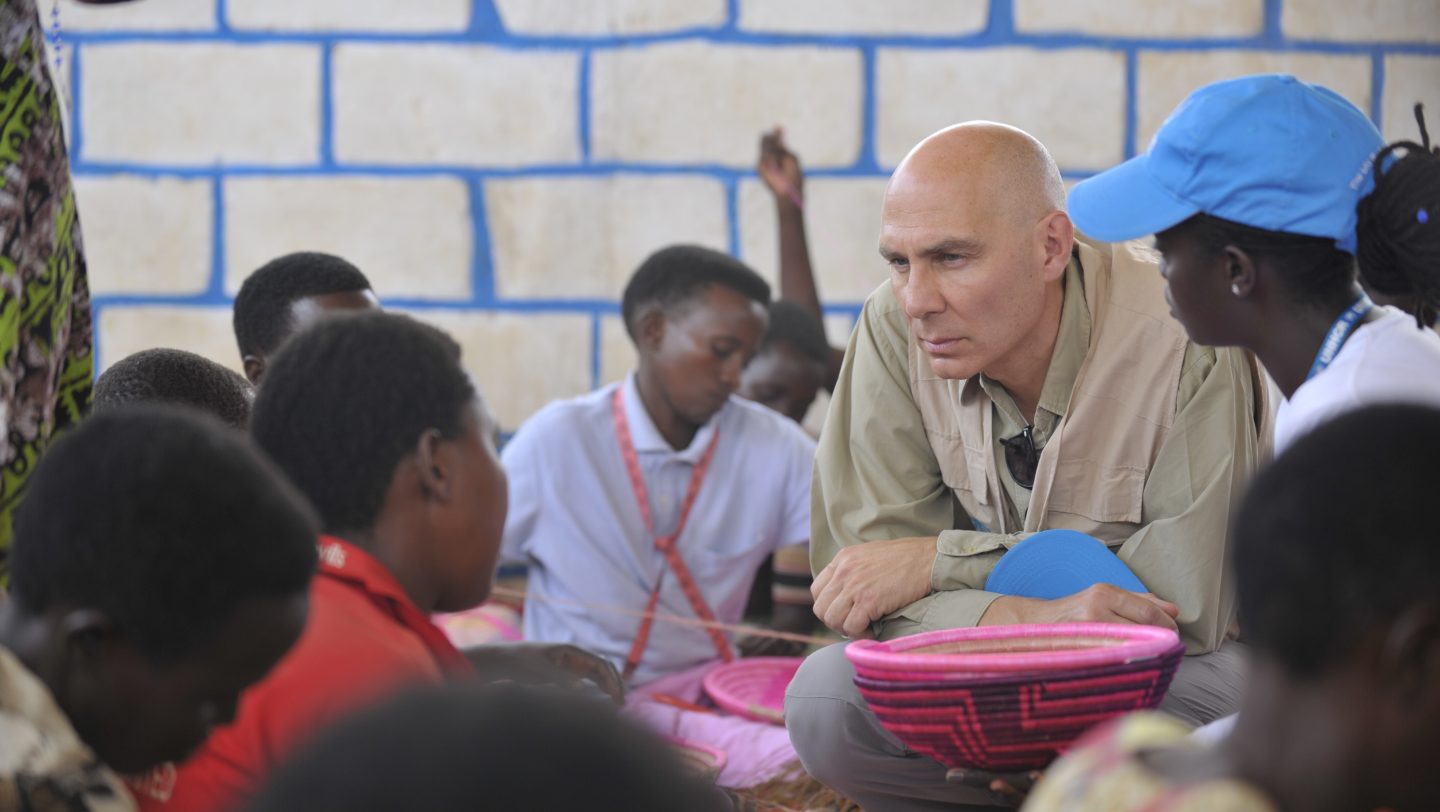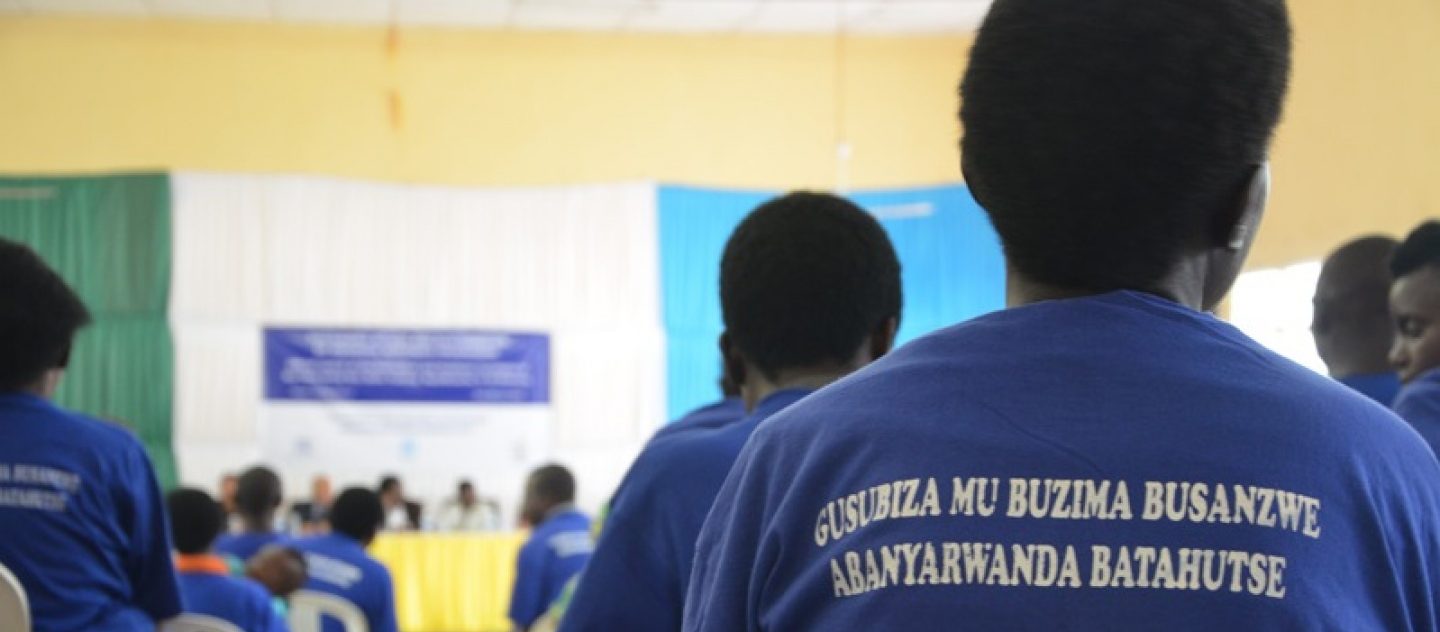Sculpting to Express Empathy in Kiziba refugee camp
Macumu Maurice is a 48 years old sculptor, who fled Eastern Democratic Republic of Congo and sought refuge in Rwanda.
Rwanda – Kiziba: Refugees in Rwanda are bringing a diverse set of skills and experiences to their host communities, which enable them to become contributing members to their communities – both inside and outside the camp. Counter to the perceived image of refugees having lost everything in displacement, creativity and passion are traits that follow refugees wherever they go. Macumu Maurice is a 48 years old sculptor, who fled Eastern Democratic Republic of Congo and sought refuge in Rwanda.
Maurice had no intention to leave his village in Eastern DRC until 2003, but together with his wife and 8 children he was forced to flee due to the deteriorating security in the region caused by civil wars. Together with thousands other refugees, Maurice and his family first arrived in Kigali in July, 2003. As a sculptor who had produced many oeuvres in DRC, he was a skilled professional eager to contribute to the local sculptural workforce. Unfortunately, the environment, financial challenges and being uncomfortable with the refugee status pressed him to join other refugees in Kiziba camp after only 3 months
On a sunny midday, Maurice is in his workshop, sculpting. He used to carve outside, in front of his small hut made of mud and wood, that UNHCR help him built, but he recently decided to make a small workshop to avoid disturbance of spectaculars [refugees of Kiziba camp] eager to follow his carves as they develop from simple pieces of wood to beautiful art pieces. During his break from carving, a silly question came to mind: “Why do you do sculpture?” After a deep breath and silence, he gently answered: “This is my lifework. I started this work [sculpting] at 18 years. Since then, I have always been sculpting.”
Maurice decided to continue sculpting and teach others the art of sculpting, with the objective to help generate income for artist refugees by connecting their handcrafts and sculptures as well as other handmade products with markets outside the refugee camp.
“Life in Kiziba is quite hard for someone who only lives by donations that we receive from UNHCR and other humanitarian organizations. Without any external support, our families would live miserably in this camp,” he said.
Maurice via self-reliance projects got support from UNHCR and the American Refugee Committee to buy the carving tools that he uses. He said that these organizations helped him to get a loan in a local branch [even though he was a refugee], which allowed him to continue his career as wood carver in Rwanda.
“When I arrived in Kiziba, everything was new here: life-style, weather, and environment; and I had to accept the style of living me and my family found there,” he said.
By 2003, 9 years after the camp was established, the vast majority of refugees in Kiziba, were making a living on agriculture and livestock. Maurice with different skills and experience had the opportunity to improve his self-reliance via his preferred means of livelihood: sculpting.
“A million thanks to UNHCR and ARC that helped me to get one hundred thousand Rwandan francs to buy wood carving hand tool sets to start-up my profession; I now make more than seventy thousand Rwandan francs a month,” he added.
Not everything was lost
Established in 1996, Kiziba refugee camp is located about 15 kilometers outside Kibuye town in Karongi district, in the western province of Rwanda. It is a home to a total of 17,270 people of concern assisted by the UNHCR and other humanitarian agencies.
In surveys over 93% of refugees in Kiziba camp express an unwillingness to return to DRC, citing concerns over insecurity and fear of persecution based on their ethnicity; their hypothesis of the forced displacement are tied to the ‘loss of everything.’
Once people are forcibly displace from their countries of origin, refugees have lost their homes, land, jobs, professional licenses, family, friends, or even identities. Certain things, however, do remain with them. As the example here illustrates, people’s human assets including expertise or proficient skills are not lost in displacement.
Despite a number of constraints induced by forced displacement, refugees can continue to build on their skills and experience and pursue creative means for a more dignified life. In the conversation with Maurice it was clear that sculpture is his lifetime vocation. Maurice is not a refugee sculptor; he is a sculptor who happened to become refugee, and he has hope for a brighter future to his family enabled via his skills, experience and hope.

Refugees in Kiziba camp are not reduced to ‘bare life’ ; as they are able to cherish the beauty of the sculptures Maurice makes. Art has and continue to be an important part of Kizibia camp refugee’s lives. | Photo: Shaban Masengesho/UNHCR
In spite of the challenging environment, refugees in Kiziba camp are not reduced to ‘bare life’; as they are able to cherish the beauty of the sculptures Maurice makes. Art has and continue to be an important part of Kizibia camp refugee’s lives.
Maurice is also a great example because he is actually making a living through this artistic work. While there is scarce demand for these types of artistic works, even elsewhere in Rwanda, people recognize the value of his art and willingly pay for his artistic skills and products. Yet, most of Maurice’s customers have been UNHCR, partner staff and members of official missions passing through the camp. Following a mission from the international Indego Africa, a social enterprise that sources arts and crafts from Rwandan cooperatives for the international market, Maurice has been offered a job to train one of Indego’s existing wood-carving coops and to lead the establishment of an in-camp coop to supply Indego.
UNHCR and partners have for many years supported the set-up of cooperatives within the arts and crafts sector. However, the focus has been on setting up the cooperatives and not on ensuring access to markets for the finalised goods. In short, the approach has been supply-driven as opposed to demand-driven. Based on the Livelihoods Strategy, UNHCR will shift the focus from not only creating cooperatives but also focusing on identifying and driving forth the demand for refugee-produced arts and crafts. Many refugees have excellent artisanal skills. With access to markets, and particularly international markets, they will be able to sell their products and increase their income towards gradual attainment of self-reliance.
Eugene Sibomana
Communications/PI Associate, UNHCR
E-mail: SIBOMANE@unhcr.org
See also

Congolese refugee girl campaigns against child marriage from her home in Kiziba camp

UNHCR’s Assistant High Commissioner for Protection and the Princess of Jordan visit Rwanda to discuss refugee issues


